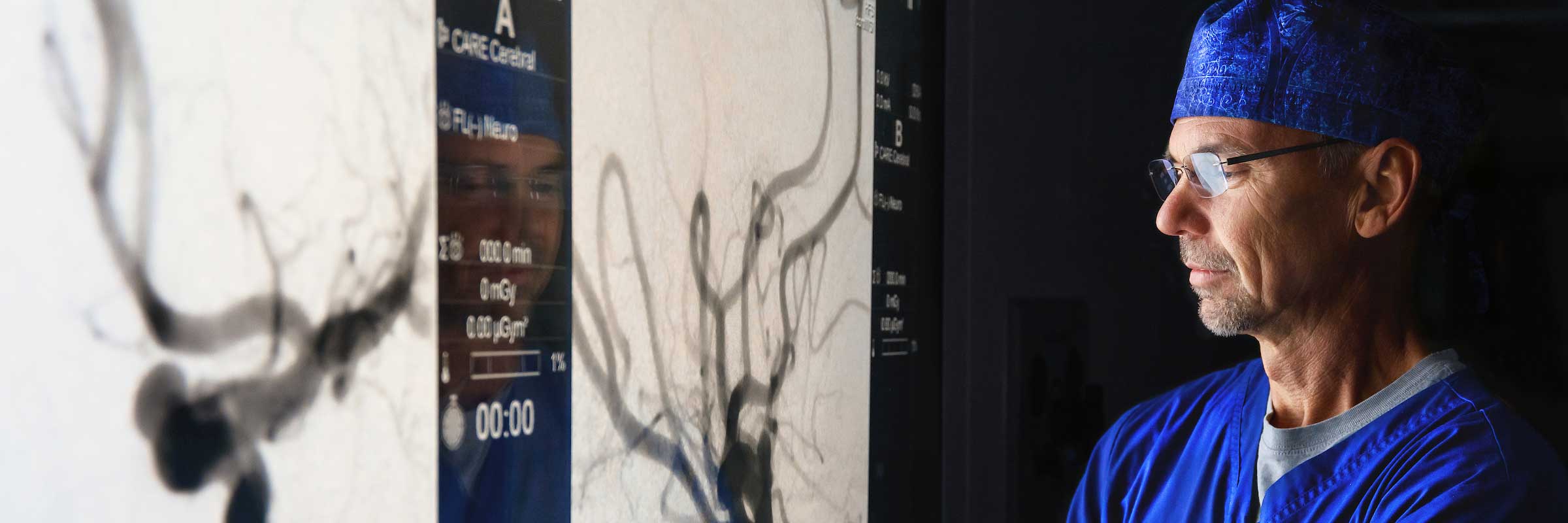Aneurysms can strike fear in almost anyone due to their reputation for bursting unpredictably and fatally. Contrary to popular belief, there are steps you can take to prevent, identify and manage aneurysms. We spoke to Charles West Jr., M.D., a vascular surgeon and physician on the medical staff at Texas Health Fort Worth and Cardiac, Vascular and Thoracic Surgical Associates of Fort Worth, a Texas Health Physicians Group practice, to learn more about one of the most common types of aneurysm — an abdominal aortic aneurysm (AAA).
An aneurysm is an abnormal expansion of any blood vessel. An AAA occurs when the aorta, a large blood vessel that supplies blood to the abdomen, pelvis and legs, becomes wider and balloons outward. Because the aorta is the body’s main supplier of blood, a ruptured aneurysm can cause life-threatening internal bleeding.
An AAA most commonly affects Caucasian men over the age of 60 who have at least one risk factor, including:
- Family history
- Smoking
- Atherosclerosis
- Emphysema
- Coronary artery disease (CAD)
- High blood pressure
- High cholesterol
- Obesity
That being said, West notes that anyone can develop an AAA, regardless of age, sex or ethnicity, especially if you have a few of the risk factors listed above.
Aneurysms develop slowly over many years and often present with no symptoms, which is why screening is important. The U.S. Preventive Services Task Force recommends that men over the age of 60 with a family history of abdominal aortic aneurysms, and men ages 65 to 75 who have ever smoked, should be screened using abdominal ultrasound.
West notes that screening is quick, painless and easy, and adds that you only have to do it once.
“It takes about five minutes and it’s very non-invasive. It’s a one-time screening no matter if it comes back positive or negative,” he says. “If you get screened and you do not have an aneurysm, you don’t need to get screened again. But if your screening reveals an aneurysm, big or small, then we move over from screening to surveillance. Screening for this is always going to be a one-time thing, unlike a mammogram or a colonoscopy.”
An aorta measuring wider than three centimeters can signal an aneurysm, which is what your physician is determining during the screening. Even if you are over 60 and meet any of the risk factors stated above, should your aorta measure less than three centimeters, West says your chance of developing an aneurysm is low, which is why you only need to be screened once.
If your screening does reveal an aneurysm, West says immediate treatment may not be necessary.
“If you have an abdominal aortic aneurysm, it doesn’t necessarily need to be treated right away but it does need to be followed, and the frequency of that depends on the size of the aneurysm,” he explains. “If it’s something really small, we might follow up with you every two to three years. If it’s a little bit larger, you would need to be checked yearly or semi-annually, but your physician will discuss this with you.”
West also adds that surgery may not always be the best form of treatment for an AAA.
“It’s not always a treatment, because we don’t treat all aneurysms; in fact, most aneurysms are small and can be safely observed,” he says. “But once an aneurysm grows beyond five centimeters in diameter, the rupture risk goes up exponentially.
“The minimally invasive surgical approach is what we call EVAR or endovascular aortic repair. With EVAR, we can go through the groin arteries and go up into the aorta and deploy a device that actually excludes the aneurysm from the circulation, keeping it from growing.”
If an aneurysm expands rapidly or tears open, or if blood leaks along the wall of the vessel, symptoms may develop suddenly. These can include:
- Clammy skin
- Nausea and vomiting
- Rapid heart rate
- Shock
Anyone with pain in the belly or back that does not go away or is very severe should go to the emergency room or call 911.
If you meet the criteria or have a family history of aortic aneurysms and have not been previously screened, West says the simple procedure is quick, often covered by insurance, and best of all, potentially lifesaving.
“It’s a preventive, potentially lifesaving measure, so screening is recommended,” he adds. “At Texas Health, we have comprehensive programs and treatment strategies to treat you. We have access to state-of-the-art equipment, and we provide easy access to emergency care. We will take care of you.”
Texas Health is committed to providing quality care to heart and vascular patients throughout North Texas and beyond. While various technologies and services are discussed here, not all of our hospitals offer every treatment and diagnostic technology highlighted. Call 1-877-THR-WELL (877-847-9355) to learn more about heart and vascular services at a Texas Health hospital near you.
To learn more about West and his colleagues visit Cardiac, Vascular and Surgical Associates of Fort Worth or call 817-250-4235 to schedule an appointment.

